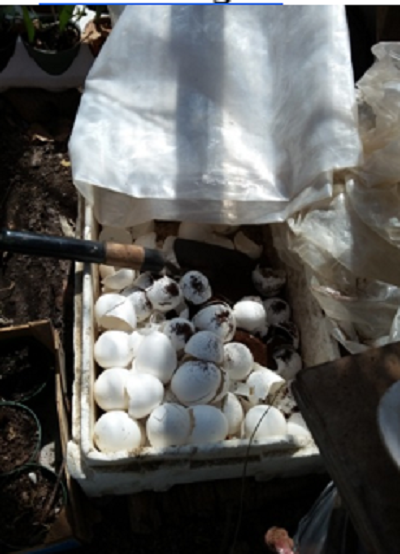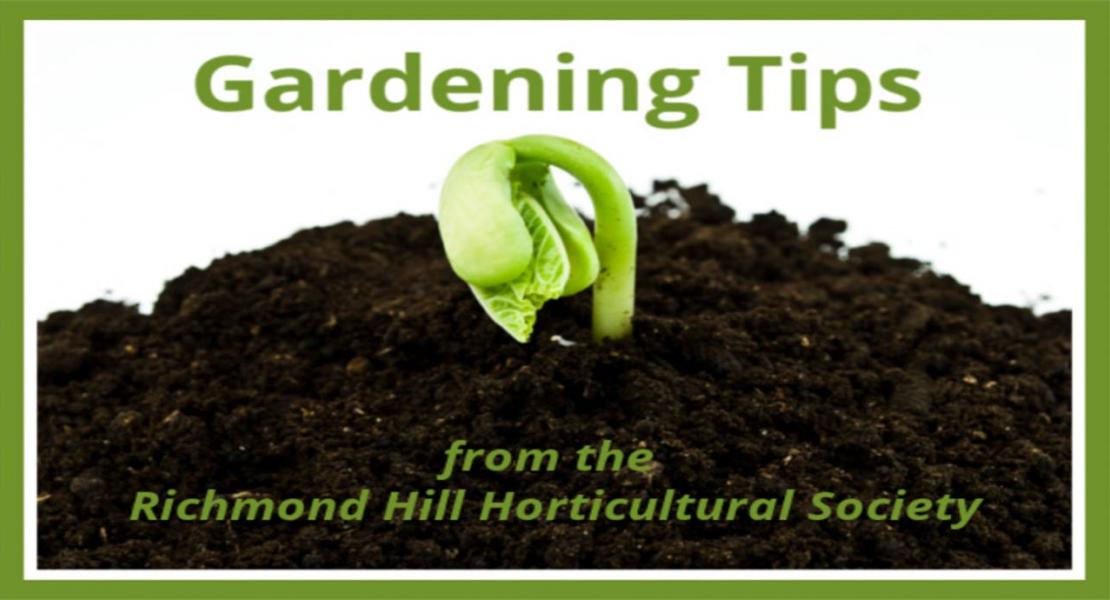Submitted by Joe Celebre, a member of Richmond Hill Garden & Horticultural Society Photos by Rosa Ruberto
Start your vegetable seeds indoors
Use any containers you have around the house, for example old empty pots, old seed starter trays, styrofoam cups or containers. Make sure that whatever container you use has drainage holes on the bottom.
- Fill the containers with seed starting potting mix. (Never use your garden soil for starting seeds.)
- Make a couple of holes that are between ¼ “ - ½” deep in the soil of your container.
- Plant about 3 seeds in each hole and cover with soil. (You need to put in extra seeds just in case some of them do not germinate.)
- If you are starting the seeds in a larger pot, space the seeds holes about 1”apart.
- Make sure you label your containers so you know what you have planted.
- Place the containers in a south facing windows that gets lots of light. If your seedlings lean towards the light, turn the container around so they are leaning away from the light. This will help straighten out them out. You may have to do this once a day depending on your lighting conditions.
Watering
- You need to keep the soil moist but not wet.
- Do not let it dry out completely.
- You can use a spray bottle to moisten the soil.

Joe dries out egg shells for his tomato plants. They provide calcium, act as slug repellent, and help prevent end rot.
Transplanting Crowded Seedlings
- If seedlings are overcrowded in the container, you can remove several seedlings and toss them out or you can transplant them into new containers with more spacing between seedlings.
- Seedlings must be at least 3” tall before you can transplant them.
- Space the transplant between 2” – 3” apart in new container.

Planting your garden
- Make sure your vegetable garden is in an area that gets full sun
- Turn over soil about 20” deep, this allows the roots to go deeper into the soil and requires less watering
- Cool season vegetables, like lettuce, arugula and onions, can be planted in the garden when the average night time temperature is 5°C or higher
- Warm season vegetables, like tomatoes, pepper and eggplant, can be planted in the garden when the average night time temperature is above 10°C, usually by end of May.
- Peas, beans, carrots and radishes seeds can be planted directly into your vegetable garden, usually in May.
- Endive, radicchio, swiss chard and fennel seeds are to be planted directly into the garden at the end of June (Joe usually plants them on June 24th). These crops with be ready to eat in September.
- Rapini seeds can be grown directly outdoors as well. These seeds need to planted at the end of July and crops will be ready end of September
- When the seeds, which were planted directly in your garden, germinate make sure that the seedlings are not too crowded. If they are, thin them out to give the plants more space to grow; otherwise. the plants will be small and thin.

